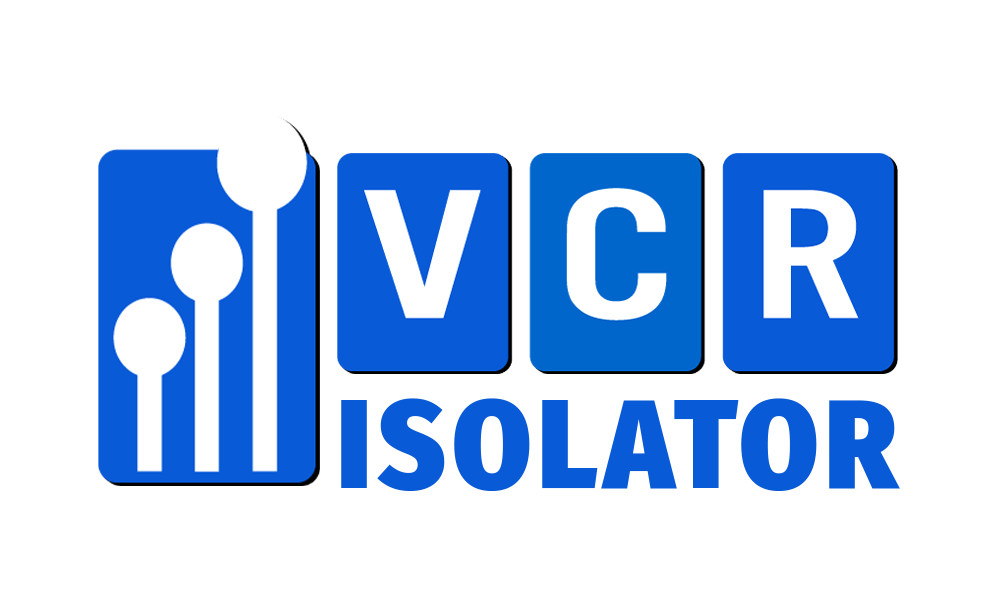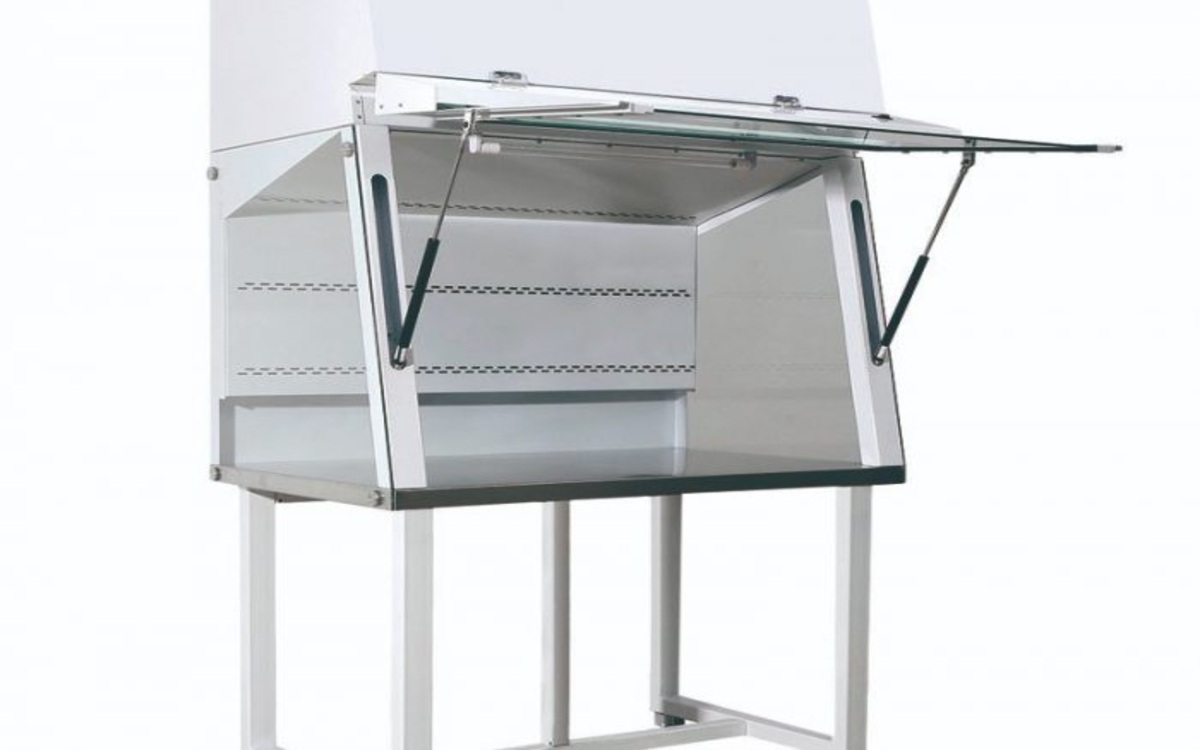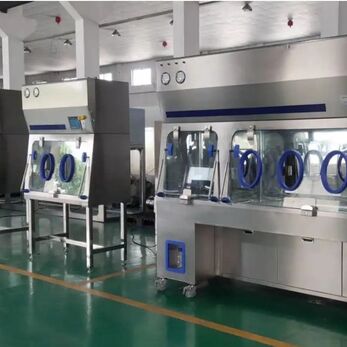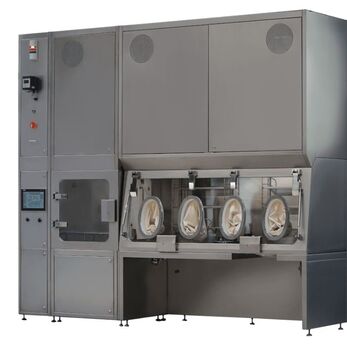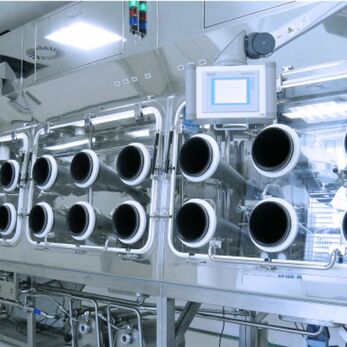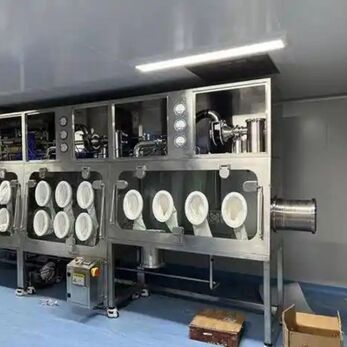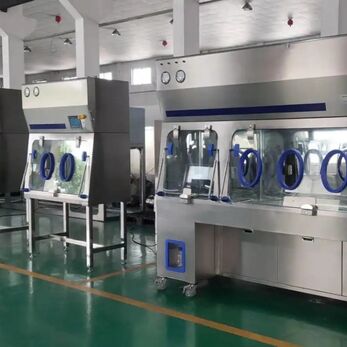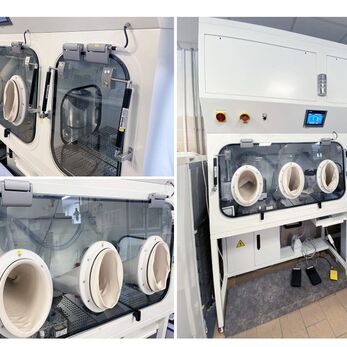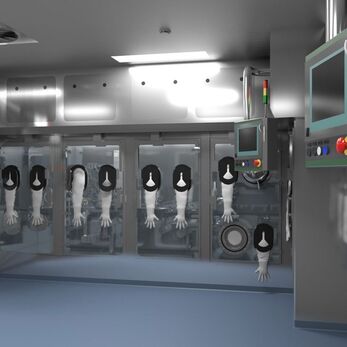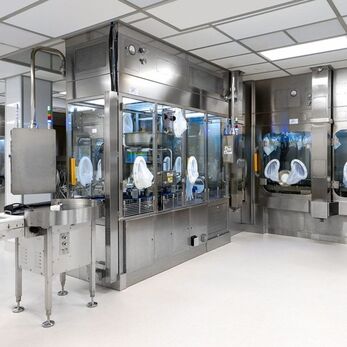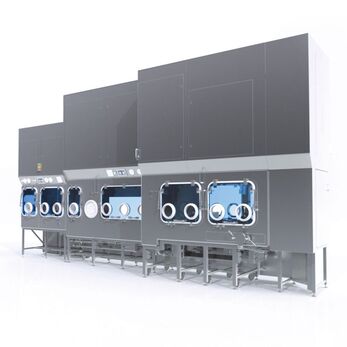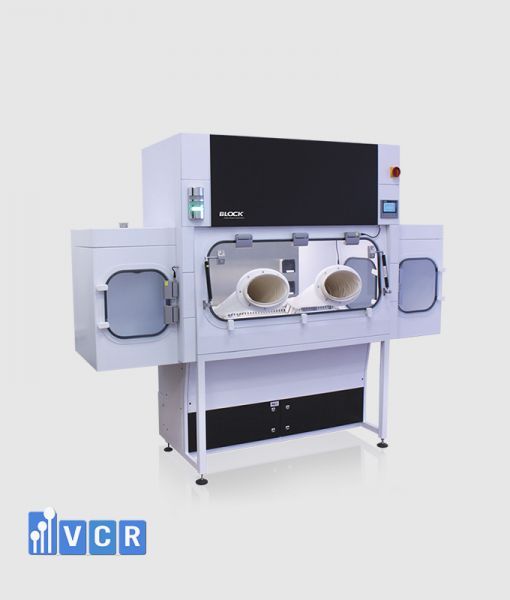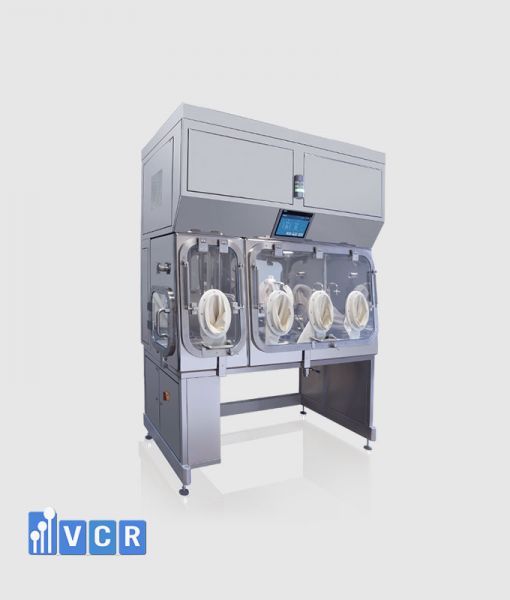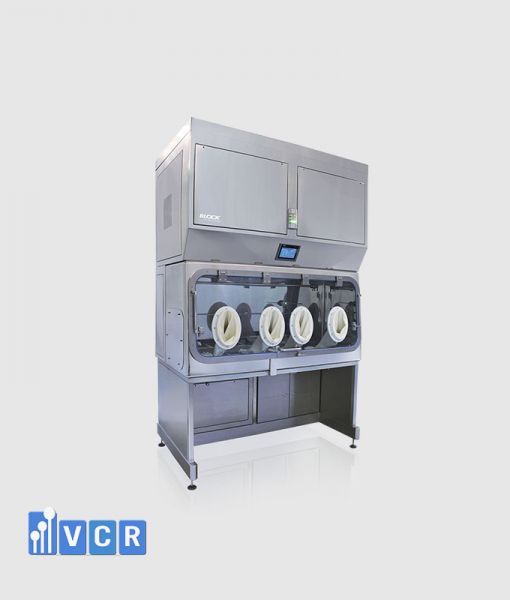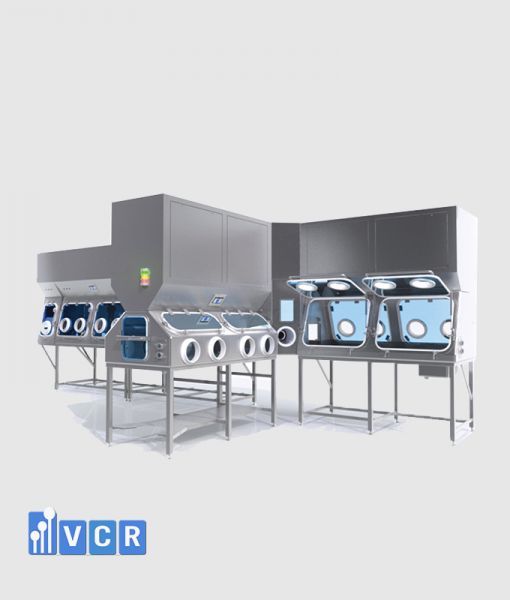An Isolator, or Class III biosafety cabinet, is a specialized clean‑room device that ensures an absolutely sterile working environment in pharmaceutical production and high-risk biological laboratories. This article recommends reputable providers that meet GMP standards.
- 1. Overview — What is an Isolator? Why is it critical in GMP?
- 2. Types & Standards for Isolator
- 3. Five Factors to Evaluate When Buying a GMP‑Compliant Isolator
- 4. Why Choosing a Specialized Provider like VCR is a Key Decision
- 5. Real-World Application in a Pharmaceutical Plant — Illustrative Scenario
- 6. FAQ — Frequently Asked Questions
1. Overview — What is an Isolator? Why is it critical in GMP?
Definition of Isolator — Class III Biosafety Cabinet
According to WHO classifications and standards like NSF/ANSI 49 or ISO 14644‑7, an Isolator is a fully enclosed device with fixed glove ports, equipped with HEPA or ULPA filters, usually operating under negative or positive pressure depending on use. The key distinction from Class I or II biosafety cabinets is its ability to completely isolate the operator from the working chamber. This feature is essential for high-risk environments such as:
-
BSL‑3 / BSL‑4 biological laboratories
-
Sterile pharmaceutical production
-
Aseptic processing and vaccine production
Role of the Isolator in GMP environment
Under EU‑GMP Annex 1 (sterile manufacturing), an GMP Isolator is considered an optimal solution to achieve Grade A cleanliness within a Grade C or D environment. It helps:
-
Protect the product from contamination by operators (a major source of microbial contamination)
-
Protect operators from exposure to dangerous biological agents
-
Prevent leakage of hazardous materials or gases into the external environment
Special Applications of Isolators by Industry
Isolators are not general-purpose devices—they are specialized solutions used in areas that require the highest levels of biological safety:
| Industry | Common Applications |
|---|---|
| Pharmaceuticals | Aseptic filling, preparation of injectable drugs, vaccine production |
| Biological Laboratories | Research on viruses and dangerous bacteria, microbial isolation |
| Advanced Biomedical Research | Handling BSL-3/BSL-4 agents, infectious disease control |
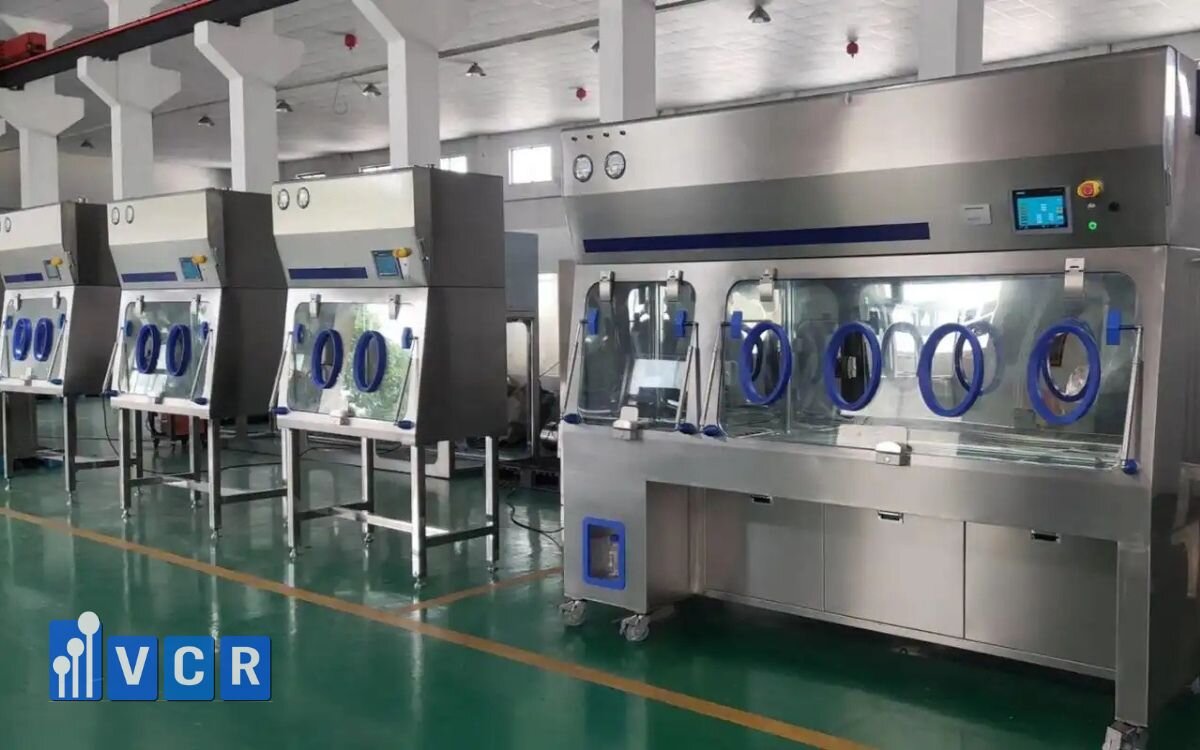
Read more: Pharmaceutical Isolators: When is the highest level of protection needed?
2. Types & Standards for Isolator
In the field of virology, microbiology, and sterile manufacturing, choosing the correct biosafety cabinet is critical. An Isolator (Class III biological safety cabinet) is considered the highest level of protection, surpassing Class II in isolation and contamination control.
Comparison of common biosafety cabinets
| Type | Intended Use | Level of Protection | Highlights |
|---|---|---|---|
| Class II biosafety cabinet | Non-high-risk microbiological work | BSL‑2 | Uses HEPA filtration, protects user and sample |
| Class III / Isolator | Work with high-risk pathogens (BSL‑3 / BSL‑4) | Highest | Fully sealed, glove-based handling, negative pressure |
An Isolator is designed to maintain a sealed chamber; internal air is filtered through HEPA/ULPA before discharge; negative pressure helps prevent leaks. This makes it the only acceptable option for certain aseptic or high-risk procedures.
Mandatory standards to look for
To use an Isolator in GMP or strict lab settings, the device must comply with:
-
EU‑GMP Annex 1: Requires Isolator to support Grade A environment and full decontamination workflows
-
ISO 14644‑7: Defines design, installation, and verification requirements for "clean air devices" in cleanrooms
-
NSF/ANSI 49: U.S. standard for biosafety cabinets Class II and III (covers containment, airflow, sealing)
-
WHO TRS 961: WHO’s technical guidance for pharmaceutical manufacturing in developing countries — emphasizes use of Isolator in aseptic processes
Choosing a compliant Isolator is not just about legal conformity — it is foundational for biosafety and product quality in pharmaceutical production or hazardous biological work.
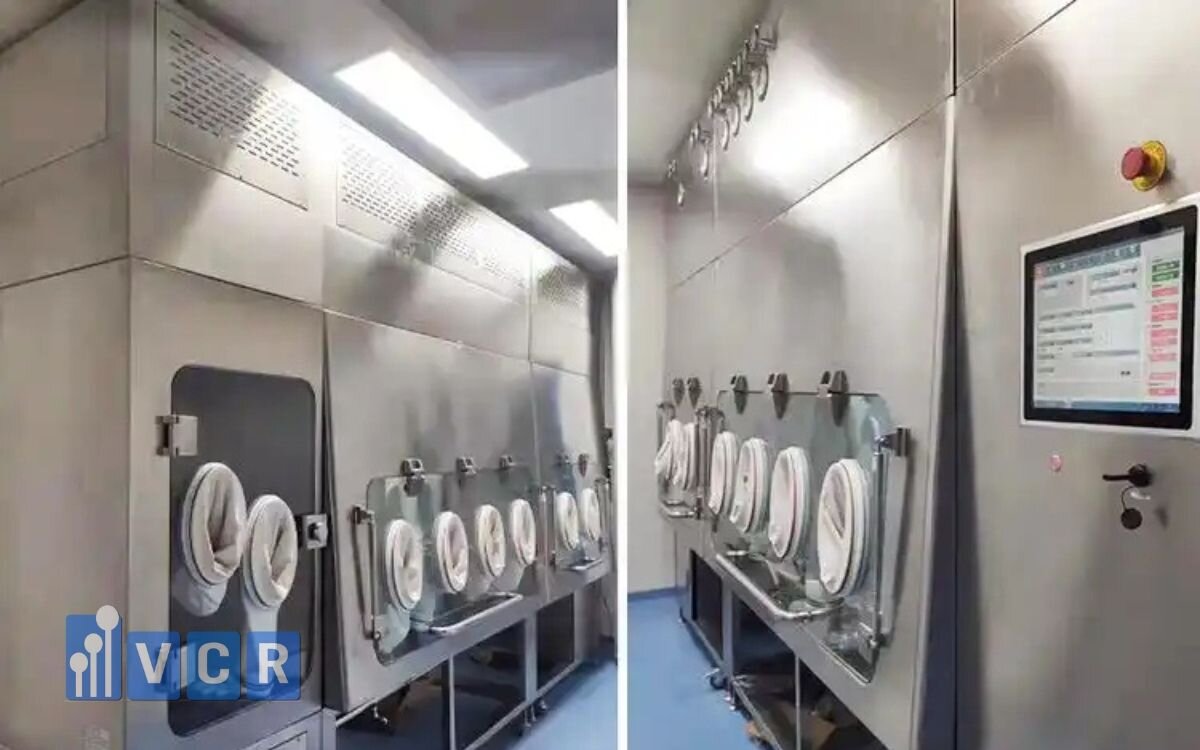
Read more: Cleanroom Isolators: Enhancing Aseptic Processing
3. Five Factors to Evaluate When Buying a GMP‑Compliant Isolator
As a critical device in sterile production, the Isolator must meet stringent technical and biological safety standards. Here are five essential factors to evaluate:
Negative / Positive Pressure: Is leak control assured?
A GMP‑compliant Isolator should operate under negative pressure (to protect the operator) or positive pressure (to protect the product), depending on application. The device must include real-time pressure sensors, leak detection alarms, and adjustability between chambers.
HEPA / ULPA Filtration Level: Efficiency ≥ 99.999%
The air filtration system is the "heart" of the Isolator. It should use:
-
HEPA filters at least H14
-
Or ULPA filters ranging from U15–U17 (≥ 99.9995% efficiency)
Filters should be installed on both supply and exhaust lines, with one‑way valves to prevent reverse flow.
Sealed Operation & Glove Port Handling: Absolute Biosafety
A defining characteristic of an Isolator is complete enclosure. Operators interact only through fixed glove ports, which:
-
Eliminate direct contact between the user and material
-
Minimize cross-contamination and human-associated microbial ingress
-
Comply with BSL‑3 or GMP Grade A requirements
Gloves must be chemical-resistant, easily replaceable, and certified for mechanical and biological resilience.
Integration of Decontamination / Automatic Sterilization
Modern Isolators should support automatic decontamination, typically using methods such as hydrogen peroxide (H₂O₂) or peracetic acid (PAA). Requirements include:
-
Pre‑programmed sterilization cycles
-
Sensors monitoring concentration, coverage, dwell time
-
Reusability without degradation of device performance
This ensures that the chamber reaches full sterility before each production cycle.
Accompanying Certifications: Full IQ / OQ / PQ Documentation
A GMP‑approved Isolator must come with:
-
IQ (Installation Qualification) — verifying installation matches design
-
OQ (Operational Qualification) — verifying the device functions as intended
-
PQ (Performance Qualification) — verifying performance under real operating conditions
These documents are essential during validation and audits (EU‑GMP, WHO, FDA, etc.).
These five factors form the minimum criteria for ensuring long-term, safe, compliant operation of the Isolator in real-world environments.
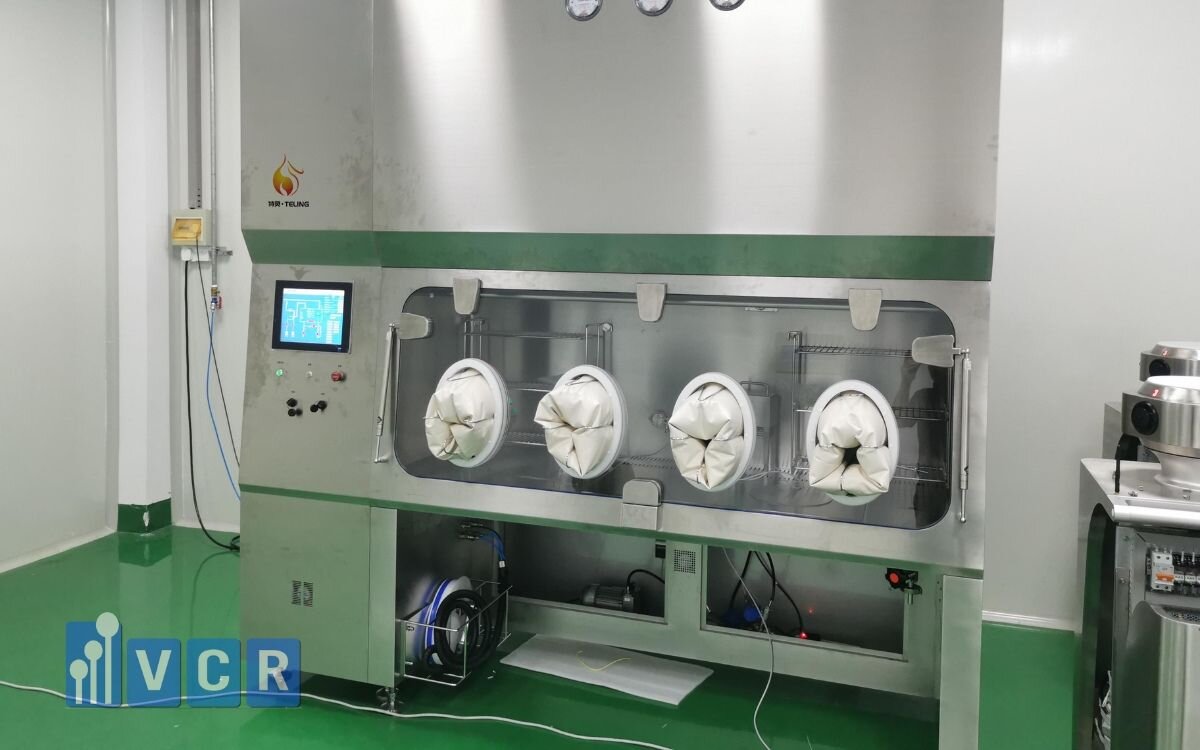
Read more: Isolators: Enhancing Aseptic Processing in the Pharmaceutical Industry
4. Why Choosing a Specialized Provider like VCR is a Key Decision
Investing in an Isolator is not just about acquiring hardware — it is about building a compliant GMP system. As such, selecting a provider with domain expertise, technical support, and regulatory insight is crucial.
VCR — A Trusted Partner in GMP Clean‑Room Equipment
With over 10 years of experience supplying equipment to pharmaceutical plants, biological labs, and testing centers, VCR is more than just a distributor — it offers full turnkey consulting tailored to each project’s technical, regulatory, and audit requirements.
Advantages of Choosing VCR as Your Isolator Provider
-
Deep understanding of industry-specific requirements (pharma, R&D, biotech…)
-
Ability to customize Isolator layouts to factory floor constraints
-
Comprehensive deliverables and after-sales support: datasheets, manuals, IQ/OQ/PQ packages
-
Preventive maintenance, calibration, and training for QC/QA staff
-
Official imported equipment from established brands (e.g. Telstar, BioAir, Esco)
-
Transparency and partnership in audit readiness, validation, and long-term operation
In the increasingly stringent pharmaceutical environment, choosing the right partner — not just the device — is essential. With VCR, you gain not only equipment but a full ecosystem: from design to validation to audit support and operation.
Read more: Compounding Aseptic Isolators: Navigating the Evolving Regulatory Landscape
5. Real-World Application in a Pharmaceutical Plant — Illustrative Scenario
To see how an Isolator functions in sterile manufacturing, consider this scenario:
Case Study: Isolator in an Aseptic Filling Area
Scenario: A pharmaceutical plant is preparing for its first EU‑GMP audit in the aseptic filling of injectable drugs, a high-risk process where microbial contamination can compromise entire batches.
Problems encountered:
-
Existing Class II biosafety cabinets have air leakage
-
Operators work directly in Grade B zone, increasing contamination risk
-
Pressure differentials between zones are difficult to control
Solution implemented:
-
Replace the setup with a positive-pressure Isolator
-
Equip with fixed glove ports, double HEPA H14 filters (≥ 99.999%)
-
Use continuous positive pressure monitoring and alarms
-
Integrate automatic decontamination cycles (H₂O₂) before/after runs
Outcomes:
-
The chamber consistently achieves Grade A conditions, even when surrounding rooms are Grade C
-
Operators never come into direct contact with the processing materials
-
Stable pressure differentials (±15 Pa) satisfy EU‑GMP audit criteria
-
Post-operational microbial testing shows contamination rates below 0.1%
-
The plant passes the GMP audit on the first attempt
This example illustrates how investing in a properly specified, validated Isolator with qualified support can reduce risk, save costs, and accelerate audit readiness.
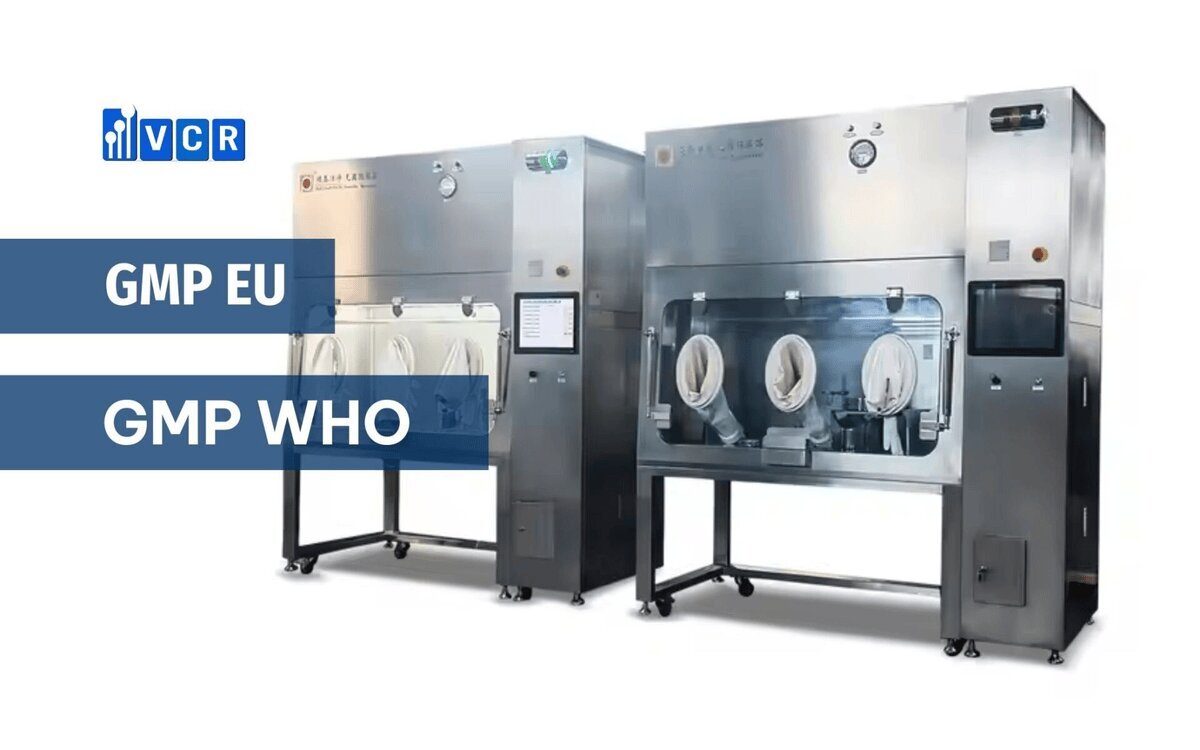
Read more: Provider of Isolator – Class III Biosafety Cabinet Compliant with GMP
6. FAQ — Frequently Asked Questions
Q: Is an Isolator different from RABS?
A: Yes. An Isolator is fully sealed; the operator interacts only through fixed gloves and never directly enters the working chamber. It can maintain stable Grade A conditions and prevent cross-contamination entirely. In contrast, RABS (Restricted Access Barrier System) is a barrier enclosure that allows limited access (e.g. via restricted openings). RABS is suitable for Grade B or C zones but does not provide the same level of containment as an Isolator.
Q: Can a Class III Isolator be used in a cosmetics factory?
A: Potentially, though not common. Isolators are typically used in pharma, biotech, or vaccine production where aseptic processes are essential. However, if a cosmetics plant handles sensitive products (e.g. injectable formulations, cell culture-based cosmetics), using an Isolator can help protect product integrity and environment—especially when adhering to ISO 22716 plus cosmetic GMP.
Q: How often should an Isolator be maintained or revalidated?
A: According to GMP and WHO guidelines:
-
HEPA filters: performance and leak test every 6–12 months
-
Pressure differentials: continuous monitoring, calibration annually
-
Leak / airtightness: test after each use cycle or after maintenance
-
Maintain full IQ/OQ/PQ records and schedule preventive maintenance
Looking to upgrade your food production line to meet HACCP / ISO 22000 standards and eliminate microbial risks?
Let VCR help you design the right Isolator System for your factory.
Contact us now:
Hotline: 090.123.9008
Email: [email protected]
Website: https://isolator.vn/
Dat VCR


